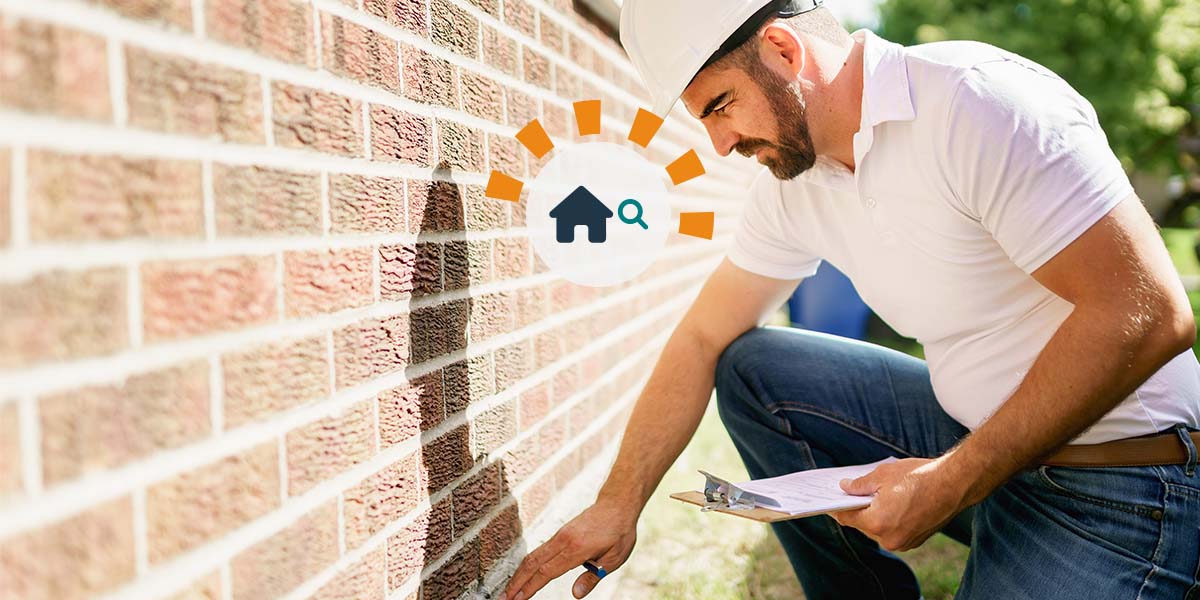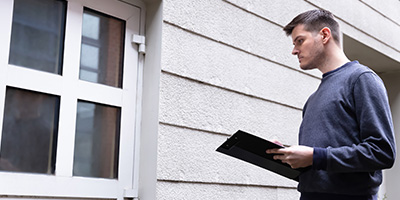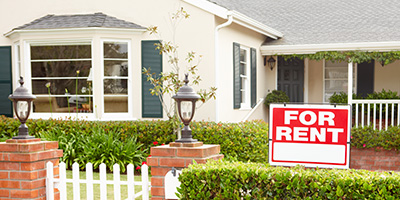DIY Home Inspection Checklist: How to Assess Your Home
From roof to foundation, learn what's most important to inspect in your home before listing it.

Ready to Sell? Inspect Your Home Before You List
Whether you need more space as your family grows, you accepted a new job in a different city or you’re looking to downsize, selling your home can be an exciting — and overwhelming — time.
While there will be a lot going on as you prep your home to hit the market, don’t forget a simple do-it-yourself home inspection. Spending a little time and money before you list your home often pays off in the end. Not only will you be able to increase your asking price, but you’ll also avoid any snags if the buyer opts for a professional home inspection, which can lead to last-minute repairs before the sale closes.
Find our downloadable DIY home inspection checklists and take a comprehensive look at your home with expert advice from Deborah Harari at Long & Foster Real Estate, Alan Singer with Sterling Home Inspections and Beth Sterner Real Estate to help guide you.
DIY House Inspection Checklists for Sellers
Ideally, when you go through our seller home inspection checklists, you find your home in pretty good condition. Maybe just a bit of touch-up painting or drywall patching is needed. But that’s not always the case. Sometimes there are bigger things, like a leaking pipe or a broken downspout, that need attention. There are also some problems that you might not even know about, which are issues that a DIY home inspection will often bring to light.
“Many times, sellers are not aware of issues in the attic, basement, roof, chimney, HVAC and hot water heater,” says Harari. “They only notice the everyday things that are visible to the eye.”
We gathered the most common repairs to check for, both indoors and outdoors, as you prepare to sell your home. While our checklist will give you plenty of items to consider, it is not a replacement for a professional inspection. Rather, it is intended to give you an idea of what professionals look for so know what to expect.

Pro Tip
There are plenty of tasks that you can fix yourself, but some are best left to a professional. If you are worried about completing a task, consider hiring a contractor.

6 Areas to Inspect Inside Your Home Before Selling
As you work your way through the checklist, it pays off to think like an inspector. If you notice it was hard to access an area for your DIY inspection, it’s probably going to be difficult for a professional, too. According to Singer, there are a few small steps sellers can take to simplify an inspection ahead of time — whether it’s DIY or professional.
“Clear space to things we’ll need to inspect,” Singer says. “If I can’t get to the furnace or water heater or attic hatch, I can’t inspect them. And then the buyer will be unhappy.”
1. Plumbing
While plumbing is most often associated with the bathroom, this part of the DIY checklist can apply to the entire home. The kitchen, basement and laundry room all have pipes that will require inspecting. Wherever the plumbing is in your house, check for common issues.
□ Clogged drains.
□ Code violations.
□ Improper water flow.
□ Rusty or leaking pipes.
□ Unsteady or unlevel toilets.
□ Evidence of past leaks or mold.
□ Sediment buildup in a hot water tank.

Pro Tip
Code violations can be tough to diagnose because the pipes are in the walls. However, there are some to be aware of — such as a double-sink bathroom vanity needing separate piping into the main line — that can easily be seen.
2. Electrical
You don’t necessarily have to be an electrician to know when a light switch isn’t working correctly, but you should probably hire one to fix the problem. While there are plenty of items in this section that you should ask a professional for help with, there are some items you can diagnose yourself.
□ Painted outlets.
□ Hidden breaker boxes.
□ Uncapped, exposed live wires.
□ Unlabeled breaker box switches.
□ Ungrounded three-prong outlets.
□ Non-working outlets or light switches.
□ Adherence to GFCI protection outlet regulations — within six feet of a sink.

“Replace burnt-out light bulbs. If the light doesn’t work, I have to write it up as a possible electrical issue. That can create all sorts of problems that could have been avoided by simply replacing the burnt-out bulbs.”
3. Doors
Keeping your doors in operational order is simple enough. However, there are some things that you may not notice about your door that could be flagged during an inspection, such as minor sticks or a loose knob. Be sure to check these common problems:
□ Bowing frames.
□ Signs of wood decay.
□ Non-working locks and latches.
□ Sticking when opening or closing.
□ Cracked or missing glass, if applicable.
□ Improper weather-stripping on exterior doors.

Pro Tip
Installing weather-stripping or fixing latches are easy DIY fixes, but other issues like replacing a door or updating the structure of the frame is best left to a professional.
4. HVAC & Major Appliances
While the major appliances themselves aren’t typically inspected, the connections should be examined for functionality and safety. Keep in mind that, although not technically an appliance, the HVAC unit will be inspected and any issues will need to be fixed before a sale happens.

“The larger items would be the ones to fix, such as the HVAC not functioning properly, issues with the roof, chimney, hot water heater and any electrical deficiencies. The buyer will always ask for them after the home inspection, so just fix them.”
Here are some key things to check for as you inspect your HVAC and any appliances you plan on leaving behind:
□ Dirty or old filters.
□ Leaking gas or water connections.
□ Improper connection of ventilation.
□ Inoperative or unstable built-in appliances.
□ Inadequate outlet voltage for appliance type.

Pro Tip
A simple way to check for a gas leak is to place a soap-and-water mix on the connections. If there are bubbles when the gas is turned on, there is a leak.
5. Attic, Basement and Crawlspaces
These spaces are often used only for storage, but they are a critical step in any home inspection. Because they can be areas you don’t visit often, issues may develop without your noticing. While working through your DIY home inspection, be sure to look for these issues:
□ Damp, musty smells.
□ Large cracks in the walls.
□ Insufficient ventilation and insulation.
□ Decay or water stains on exposed wood.
□ Stains or major cracks in the foundation.
□ Plumbing, exhaust or appliance vents that end in the attic.

“I commonly find ‘fungal growth’ on home inspections. This does not, and I repeat does not, mean the house is infested with mold. This can be fixed, but the repairs can range from simple to very invasive. It’s definitely an item that could have been caught on the pre-inspection.”
6. Walls and Ceilings
If there are structural problems in the house, the walls and ceilings are usually the first to show it. While certain things such as small cracks or holes may not be a big issue, they are worth double-checking because they could be symptoms of a larger problem. While smaller issues like a dent in drywall might not merit much thought, here are some issues that you should be looking for:
□ Visible stains.
□ Leaning walls.
□ Sagging ceilings.
□ Flaking or peeling paint.
□ Significant cracks or holes.
□ Gaps between walls and the floor.
□ Cracks connecting with door frames.

“My suggestion would be to fix items that will always come up again and again. Those are items that would scare potential buyers off if they knew about them or cause them to offer less during the negotiation process.”

Top 5 Outdoor Areas to Check During Your Home Inspection
As you perform your home inspection, you’ll need to step outside to view the building structure as well as the property it sits on. While you should be able to notice if there are any issues using this checklist, there are some items, such as chimney roof flashing or exposed window lintels, that may require help to spot and a lot will require professional help if an issue needs to be corrected.
As you’re checking the outside of your home, use our DIY Home Inspection Checklist PDF to keep track of your progress.
1. Roof
The roof is one of the most important parts of a house, which is why it is so toughly scrutinized during a home inspection. It's also often one of the trickiest areas to inspect yourself because most homeowners aren't familiar with the basics of roofing. While climbing onto your house will be the easiest way to see issues, many of these problems can be identified from the ground.
□ Curling shingles.
□ Painted over vents.
□ Rusty or cracking flashing.
□ Loss of texture on shingles.
□ Noticeable sags in the roof.

“With a roof in excellent condition, this not only increases the home value, but allows the homeowner to not stress during a home inspection. You’ll know your home is in good shape, you are putting your best foot forward and making the process a whole lot easier.”
2. Chimney and Gutters
Gutters and downspouts help keep your home dry and take the water away from your foundation. That is why it is important to make sure they are all properly working. Many gutter issues can be taken care of on your own, but if you notice issues with a chimney, professional help is suggested. Whichever route you take, keep an eye out for these problems while doing your inspection.
□ Clogged gutters.
□ Unsealed gutter joints.
□ Rusty downspouts or gutters.
□ Missing bricks or a lean in the chimney.
□ Downspout directing water toward the home.
□ Water in a gutter does not run toward a downspout.

Pro Tip
Not all loan types a buyer will have are equal. If a buyer is using an FHA loan, some issues that could slide with a conventional loan, such as unpainted downspouts, must be fixed.
3. Windows
While a quick glance at a window could leave you thinking everything is fine, inspectors will spend a bit more time checking them out to make sure there are no issues with the seal and structure surrounding the panes, hurting their energy efficiency. Here are some common things home inspectors will look for:
□ Broken glass.
□ Bowed frames.
□ Worn weather-stripping.
□ Exposed or rusted lintels.
□ Rotting or decaying wood.
□ Difficulty opening and closing.
□ Cracked or missing caulk around joints and frames.

“Check to see that exterior doors and windows operate. Doors that don’t open and windows that don’t work all get flagged on the report and end up having to be corrected.”
4. Utility Connections
Gas, water and electricity need to enter your home somewhere. Often, these connections can be expensive to fix and need to be done in conjunction with your utility provider. Additionally, outlets, external air conditioning units and water spigots have to enter through the wall of the house. Inspect these connections and keep an eye out for:
□ Improper caulking and sealing.
□ Outlets not weather protected.
□ Spigots and outlets that don’t work.

Pro Tip
If your spigot or outlet isn’t working, don’t panic. Check your breaker box to see if the outlet is turned on and track your water pipes to see if the valve is shut off before you start to worry.
5. Building Structure
Homes are built to withstand a lot. Bad weather, minor impacts and plenty of other things can happen to a house without leaving a mark. That is why an inspector will look over the external walls of your home to see if anything looks out of the ordinary. If it is Sterner suggests "Touch-up paint is always a great idea. A little paint goes a long way for a prospective buyer." Which can help with some cosmetic flaws. You should look for:
□ Vines on walls.
□ Leaning stairways.
□ Cracks in the foundation.
□ Leaning, bowing or sagging walls.
□ Flaking, peeling or bubbling paint.
□ Cracked or missing siding and masonry.
□ At least six inches of brick or block between the ground and siding.
6. Property
In addition to the home itself, inspectors will give the grounds a once-over to make sure there are no obvious issues that could be problematic. While there are a range of things that inspectors can look for, here are the most common:
□ Unstable structures.
□ Inadequate drainage.
□ Trip hazards in walkways.
□ Loose railings on stairways.
□ Signs of wildlife or rodent issues.
□ Trees limbs touching or hanging over the house.

Pro Tip
If your driveway or walkways are uneven, they are considered a trip hazard. Consider breaking up and removing the concrete yourself before hiring a professional to level the ground below and pour new concrete.
Should I Get a Home Inspection Before Selling My House?
A 2001 joint study by the National Association of Realtors and the American Society of Home Inspectors found that 84% of buyers had an inspection completed before closing the sale. Additionally, the Bureau of Labor Statistics expects the home inspection business to grow 10% by 2026, meaning the trend of buyers requesting a home inspection isn’t going to stop.
While a professional home inspection is not required by law at any stage of the home buying process, it is a very common request from buyers. Performing a home inspection yourself allows you to disclose issues in the agreement or remedy them before listing.

“I have to say if I could convince every seller to get an inspection done prior to listing, that would be fantastic. A home inspection can be very useful and insightful to the seller. It helps the seller learn about the house and really know what condition the property is in.”
Being Proactive Can Help Your Bottom Line
By following our DIY home inspection checklist, you can fix small issues yourself while lining up professionals to handle the bigger things — like a roof, HVAC or basement repair — you aren’t comfortable with, all on a timetable that works with your schedule. And making that small investment early can help increase your overall sale price as your home will be move-in ready for the next owner to enjoy.
Found a few things that need fixing? Check out our guide on finding the right contractor. Is your house on the market and you’re moving out? Use our Ultimate Moving Checklist to help ease the process.
Expert Contributors

Alan Singer
As the owner of Sterling Home Inspections in the Westchester area, Alan has years of experience in property investment, custom renovations and home inspections. He aims to create concise and easily understandable reports for those who get an inspection before purchasing a home.

Beth Sterner
Located in the greater Charlotte area, Beth works as a real estate agent and is active in her community. She utilizes effective marketing techniques for her client's homes to help them sell quickly.

Deborah Harari
Deborah is a real estate agent in the Baltimore area with over 20 years of experience. She specializes in first-time buyers, relocation services and buyers looking to downsize and retire.
What Do You Think?
Have additional tips on DIY Home Inspections? We're listening. Head over to Twitter or Facebook,
and use #dumpstersblog to join the conversation.





